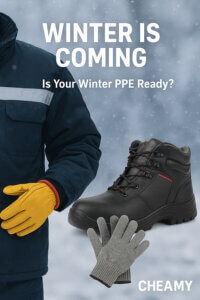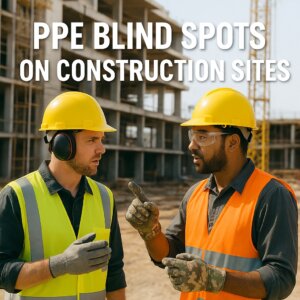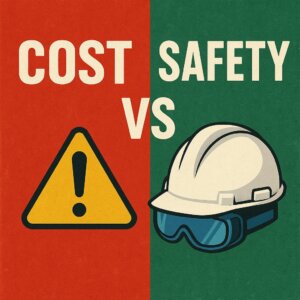In a chemical lab, concentrated sulfuric acid spills but slides harmlessly off a researcher’s protective suit—this is the precision defense of acid and alkali resistant clothing. As critical personal protective equipment (PPE), these garments deploy advanced material science to create an invisible fortress against corrosive hazards.
1. Material Decoding: The “Molecular Armor”
The core protection lies in molecular engineering of specialized fabrics, tailored to specific threats:
-
Rubber (Natural/Synthetic) Heavy-duty defense for high-concentration acids/alkalis:
- Chloroprene rubber resists strong acids (e.g., electroplating tank operations).
- Butyl rubber blocks organic solvents (e.g., chemical plant maintenance). ⚠️ Limitation: Low breathability; prolonged wear causes heat stress .
-
PVC-Coated Fabric Cost-effective barrier against medium-low concentration splashes:
- Polyester base + PVC coating for waterproofing (ideal for labs/pesticide spraying). ⚠️ Risk: Brittleness in cold temperatures; requires regular replacement.
-
PTFE Membrane (Polytetrafluoroethylene) Ultimate protection against lethal agents (e.g., concentrated H₂SO₄, HF):
- Microporous structure balances chemical resistance (permeation <1%) and breathability.
- Critical in semiconductor manufacturing/high-purity reagent lines.
-
Composite Fibers (Aramid/HDPE) Dynamic hazard versatility (oil rigs/emergency response):
- Aramid: Heat + corrosion resistance.
- HDPE: Lightweight liquid penetration barrier .
2. Critical Industry Applications
| Sector | Protection Standard | Key Features |
|---|---|---|
| Chemical Production | GB 24540-2021 (China) | Full-seal design; double-pressed seams; >98% H₂SO₄ splash resistance |
| Electroplating | EN 14325 + EN 13034 | Acid-proof coveralls + face shields/gloves for CrO₃/HNO₃ baths |
| Environmental ER | ISO 16604 Level 2 | Anti-permeation suits for complex chemical mixtures (e.g., wastewater treatment) |
| Laboratories | EN 13034 Type 6/PB | Lightweight, breathable garments for solvent splashes |
Innovation: Multi-layer structures (e.g., polyester barrier + activated carbon) adsorb leaked acids, enabling safe evacuation .
3. Purchasing Guide: Avoiding Critical Errors
- Certification First:
- GB 12012: ≥90% acid resistance efficiency.
- EN 13034: ≥15-min penetration resistance (tested with 80% H₂SO₄/30% NaOH) .
- Scenario Matching:
- HF environments: Mandatory PTFE suits.
- Medium-low alkalis: Economical PVC options.
- Wear Tests:
- Stretch seams to check delamination (non-breathable) or thread breakage (breathable).
- Simulate bending/joint mobility.
- Verify overlap with acid-resistant gloves/boots.
- Price Reality:
- Standard: $50–120 USD.
- Advanced (e.g., anti-static + chemical-proof): $300+ USD.
4. Maintenance & Retirement Protocol
- Cleaning Rules:
- PVC: Never use >40°C water (causes coating cracks).
- Rubber: Neutralize residues with 0.5% sodium carbonate solution; air-dry in shade (UV degrades material) .
- Lifecycle Alert:
Material Avg. Lifespan Retirement Signs PTFE/Aramid 18–24 months Surface cracking/loss of elasticity PVC-Coated 12–18 months Hardening/whitening at folds Polyethylene 6–9 months Increased translucency/micro-leaks
Case Study: A 3mm sleeve tear led to HF penetration causing third-degree burns—5-minute pre-use visual inspections prevent 90% of accidents .
5. Next-Gen Defense: Smart PPE Evolution
Cutting-edge labs are developing:
- pH-Sensing Fibers: Auto-color change upon acid contact.
- Nanotech Liquid-Repellent Surfaces: 98% acid roll-off in <0.5 sec.
- Robotic CPC: Custom acid/alkali-resistant suits for electroplating/cleaning bots (e.g., FANUC CR-15iA).
No “universal” suit exists—only precise protection strategies. As chemical industries advance toward ultra-precision, acid and alkali resistant clothing evolves from basic PPE to a molecular defense system. Its value transcends hazard isolation: it empowers workers to create safely amidst lethal threats.
“Safety isn’t a cost—it’s an investment without ceilings.” — GB 24540 Safety Code








